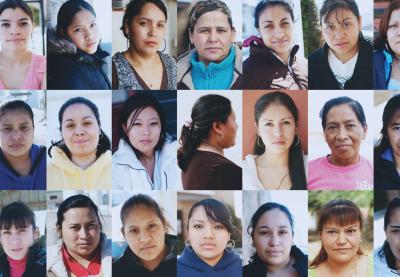When Sara entered the United States in her early 20s, her main goal was to find work and help provide for her family back in Mexico. But she also had a youthful urge to travel. “I was really excited about seeing the United States because I heard a lot about how pretty it was,” she says.
A decade later, at 33, Sara wishes she had resisted the allure of her country’s richer neighbor. “Now that I’m here, I see things so differently.” Life in Mexico was hard, she says, but “even though I was poor, I was free.”
The crossing was difficult. She paid $1,800 for the privilege of nearly losing her life in the Sonoran Desert. The journey began with 18 other immigrants. By the end, after five days in the desert, only a handful remained. “Many people got lost.”
Sara is one of 150 undocumented workers interviewed for the Southern Poverty Law Center report Injustice on Our Plates: Immigrant Women in the U.S. Food Industry. These women from Mexico, Guatemala and other Latin American countries provide cheap labor for the billion-dollar food industry. They work in the fields harvesting tomatoes, oranges, mangoes and other fruits and vegetables. They also work in dangerous food-processing plants.
Many U.S. teenagers know nothing about women like Sara. Students don’t know why these women come here or why they work in hard, high-risk jobs. Teaching Tolerance has excerpted parts of the report in a set of seven high-interest classroom lessons.
“With these lessons, students have a chance to see beyond the bumper-sticker slogans of the immigration debate to the human beings involved,” says Teaching Tolerance Director Maureen Costello. “With facts at their side, they can question the myths about immigrants and come to an understanding of how interdependent we are with the people who work on farms and in food factories. High school social studies teachers will find lessons on economics, law and public policy in this one simple unit that also helps students understand how we build our lives on the labor of others.”
Sara’s contribution to America’s appetite is instructive. Within a week of arriving in North Carolina, she got a job in a chicken-processing plant. Though prepared to work hard, she was shocked by what she found. Working on the “disassembly line,” Sara placed skinned, whole chickens onto cones that sped by her. The food plant was bitterly cold to preserve the food. She regularly stood for eight hours at a time, sometimes 10.
“You’re at the pace of a machine,” she says. “I felt like I was going to faint. The line was too fast. ... I couldn’t close my hands at night because they were so swollen. One day I went to the office and told them I couldn’t take it, that it felt like my bones were going to pop out.”
SPLC Legal Director Mary Bauer says that these women are the backbone of the U.S. food industry. “But they are exploited and abused in ways that most of us can’t imagine and that none of us should tolerate,” says Bauer, a co-author of the report. “Fear keeps these women silent, so their suffering is invisible to all of us who benefit from their labor every time we sit down at the dinner table.”

These Teaching Tolerance lessons can help educators make undocumented immigrants like Sara visible to their students at last. They include:
Recognizing the Undocumented:
This introduction emphasizes the ways in which undocumented workers create goods and services that we enjoy.
The Economics of Risk:
For undocumented laborers—women in particular—everyday life plays out in a series of calculated risks.
The Motivation for Movement:
Why do undocumented workers come to the United States, and how do their motivations mirror our own?
Family Ties:
Most undocumented women are determined to improve life for their children.
The Bill for Health:
Why do so many undocumented women take jobs that are hard and dangerous?
Acting Locally:
How students can make a difference in the community.


0 COMMENTS